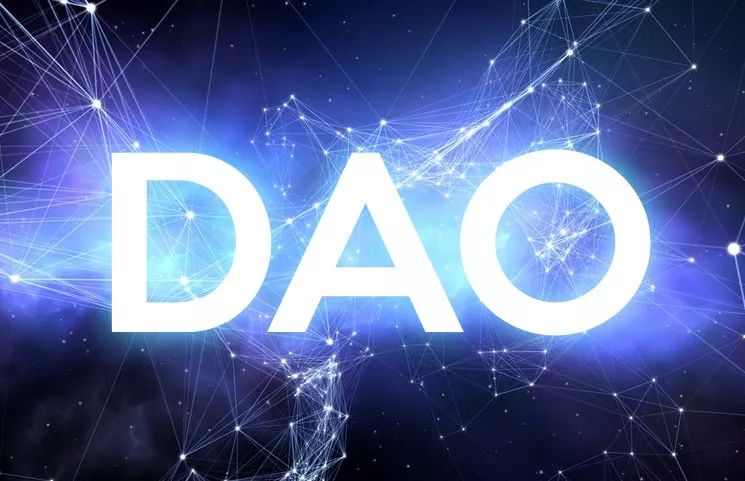Observation | Multi-centralized Autonomous Organization-Very DAO Based on Blockchain Technology

Figure 1 DAO
Centralized organization
Traditionally, the concept of organization is based on a strict ownership structure. With the development in recent decades, a large number of enterprises are gradually trying to create an open management model in order to provide a voice platform for more employees. However, in essence, decision-making is still directed at a small group of people. For centuries, the definition of ownership, hierarchy, and rules has been a difficult problem for organizations on their development path. Therefore, a multi-centric company-the concept has always been a vision. However, in recent years, this vision has gradually become a reality thanks to the "birth of the world" of the polycentric autonomous organization.

- Interview with Babbitt 丨 Yu Yangmo, Chairman of RockTree: The application of non-currency blockchain to be verified by the market; Libra will be difficult to go online next year
- China Blockchain Investment and Financing Census Report: The financing amount is only a quarter of that in the United States, and the most popular in digital asset related fields
- Blockchain landing application inventory: five major areas of application tell you "what can the blockchain do"
Figure 2 Structure of a centralized organization
Polycentric autonomous organization
A multi-centralized autonomous organization (DAO), also known as a multi-centralized autonomous company, refers to an organization that codes rules and regulations based on computer programs. Among them, computer programs are open and transparent, and do not take orders from any centralized mechanism. Every multi-centralized autonomous organization uses blockchain technology to maintain its financial transaction records and verify transactions, and every member of the organization can participate in voting in the decision-making process.

Figure 3 Comparison of the two organizations
Source: Cointelegraph
Difference from a centralized organization
Different from the centralized organization, the multi-centralized autonomous organization does not rely on traditional third-party institutions, but uses blockchain and smart contracts to reduce transaction costs, increase its transparency, and use the consensus mechanism to benefit all members. Connected. In other words, all members of the multi-centralized autonomous organization will not sign any legal contracts, and all agreements are based on open source code.
In addition, the multi-centralized autonomous organization does not adopt a top-down management model, but provides a point-to-point operating platform for participants of the entire organization. Therefore, all members of a polycentric autonomous organization are not tied to a legal entity.
The following will explain the advantages of a polycentric autonomous organization from three aspects.
Borderless interaction
"Referendum"
In addition, in a centralized organization, only a part of the people (the board of directors) will participate in the decision-making, and the topics discussed cannot cover the suggestions of all members. In contrast, in a multi-centralized autonomous organization, each member can participate in voting and can publish their own proposals, so the opinions of each member will be respected and a "referendum" will be achieved.

Unchangeable rules
Challenge: Acceptance and security issues
At present, polycentric autonomous organizations have no clear legal status, and some similar organizations have been identified by the United States Securities and Exchange Commission as suspected of illegal fundraising; in addition, security issues are a major hidden danger. Once the system is officially running, the code of the autonomous organization will be very difficult to modify, which will cause great obstacles to bug fixes. For example, in 2016, a multi-centralized autonomous organization called The DAO was hacked for its systemic vulnerabilities and lost about $ 50 million. In order to recover the losses, the Ethereum blockchain had a controversial hard fork at the time. It is precisely because of this incident that people are quite worried about the security of polycentric autonomous organizations.

Figure 5 Ethereum hard fork
review
Bitshares
Bitshares was founded in 2013 and is the first platform to operate as a multi-centralized autonomous organization. There are two important roles in this platform: representatives and witnesses. Representatives will maintain and update the entire platform, and witnesses will verify each transaction and add them to the blockchain. Every member holding a Bitshares token is eligible to vote.

Figure 6 Bitshares
Source: UseTheBitcoin
2. DashDAO
In DashDAO, each member holding more than 1000 tokens will have the opportunity to be selected as a super node. Each super node will manage DashDAO, including tasks such as instant sending and anonymous sending. Each member can send a proposal to the super node, and if most of the super nodes agree with this proposal, they will withdraw some funds from DashDAO's fund pool to support the proposal.

Figure 7 Dash DAO
Source: CryptoNewsZ
Conclusion
Multi-centralized autonomous organizations do not rely on traditional third-party institutions, use blockchain and smart contracts to reduce transaction costs, increase their transparency, and link the interests of all members through a consensus mechanism. However, due to issues such as unclear legal status and security, the development journey of polycentric autonomous organizations is still long.
We will continue to update Blocking; if you have any questions or suggestions, please contact us!
Was this article helpful?
93 out of 132 found this helpful
Related articles
- Regulatory review: China reorganizes, US expands regulation, India delays decision
- "Development Map of China's Blockchain Industrial Park" Released: Insight into the Development of the Park in Five Dimensions
- Will Upbit's $ 50 million loss bring Defi's "prosperity"?
- Tucao Series | Blockchain Games on Steam
- Twitter staged "year-end drama", Ethereum founder Vitalik Buterin became industry leader
- How the Macro Economy Affects Bitcoin Price
- Comment: The premise of regulation is to clearly define the precise meaning of digital assets






